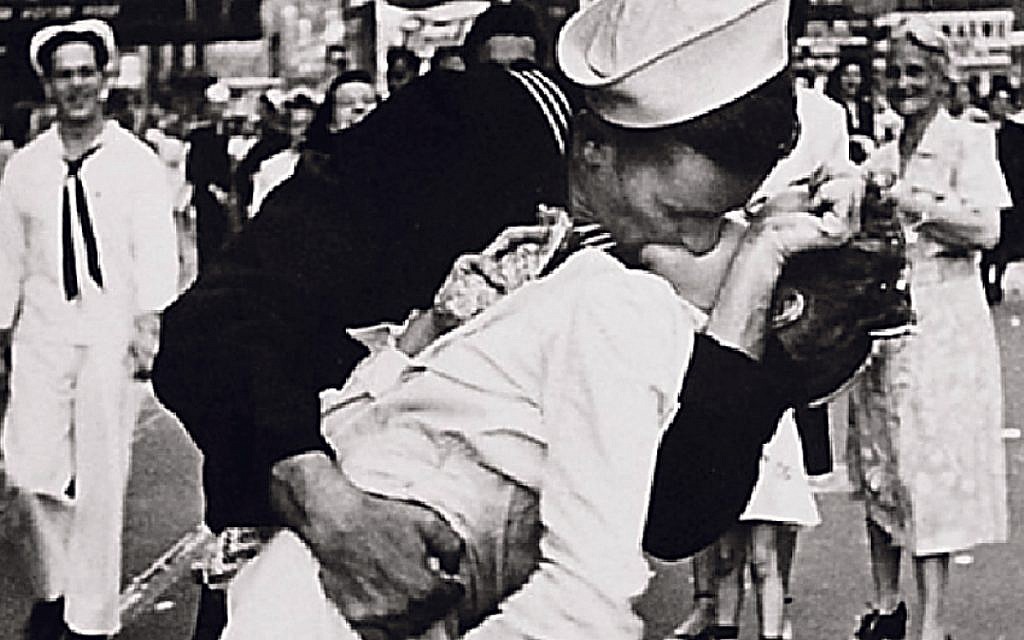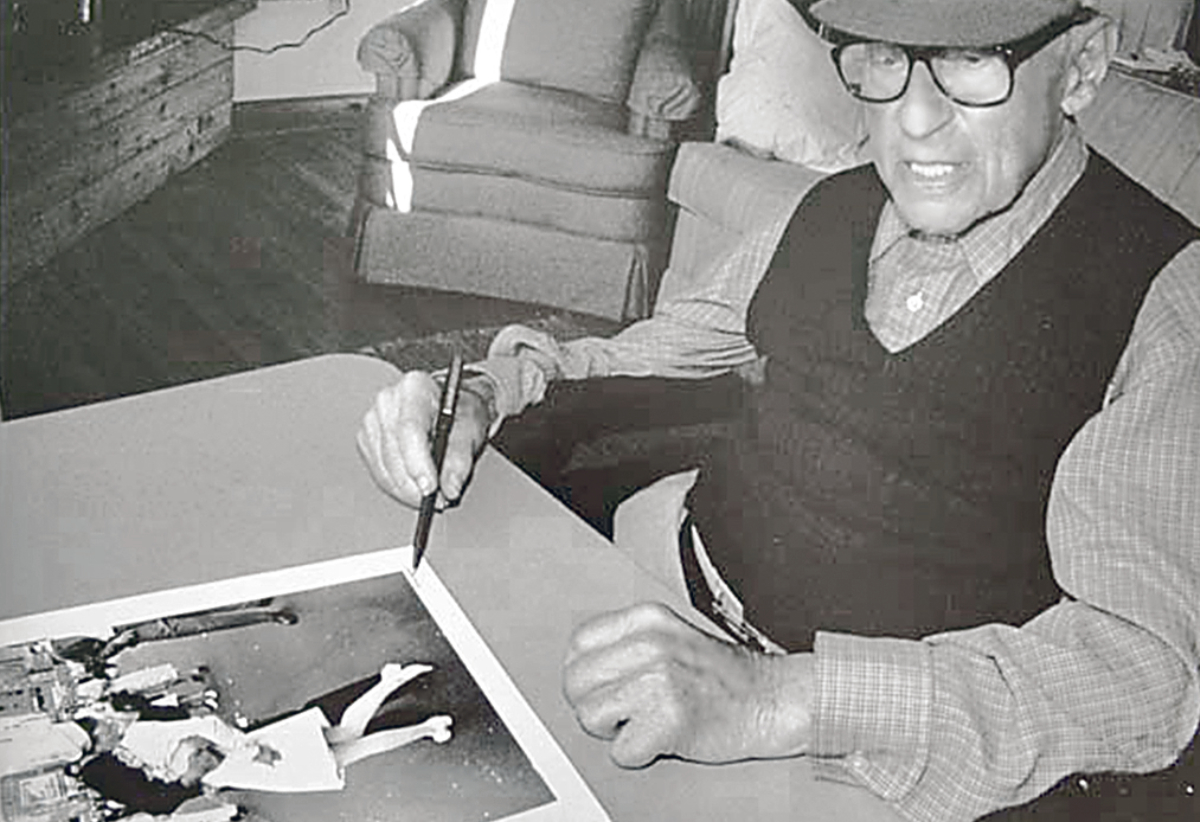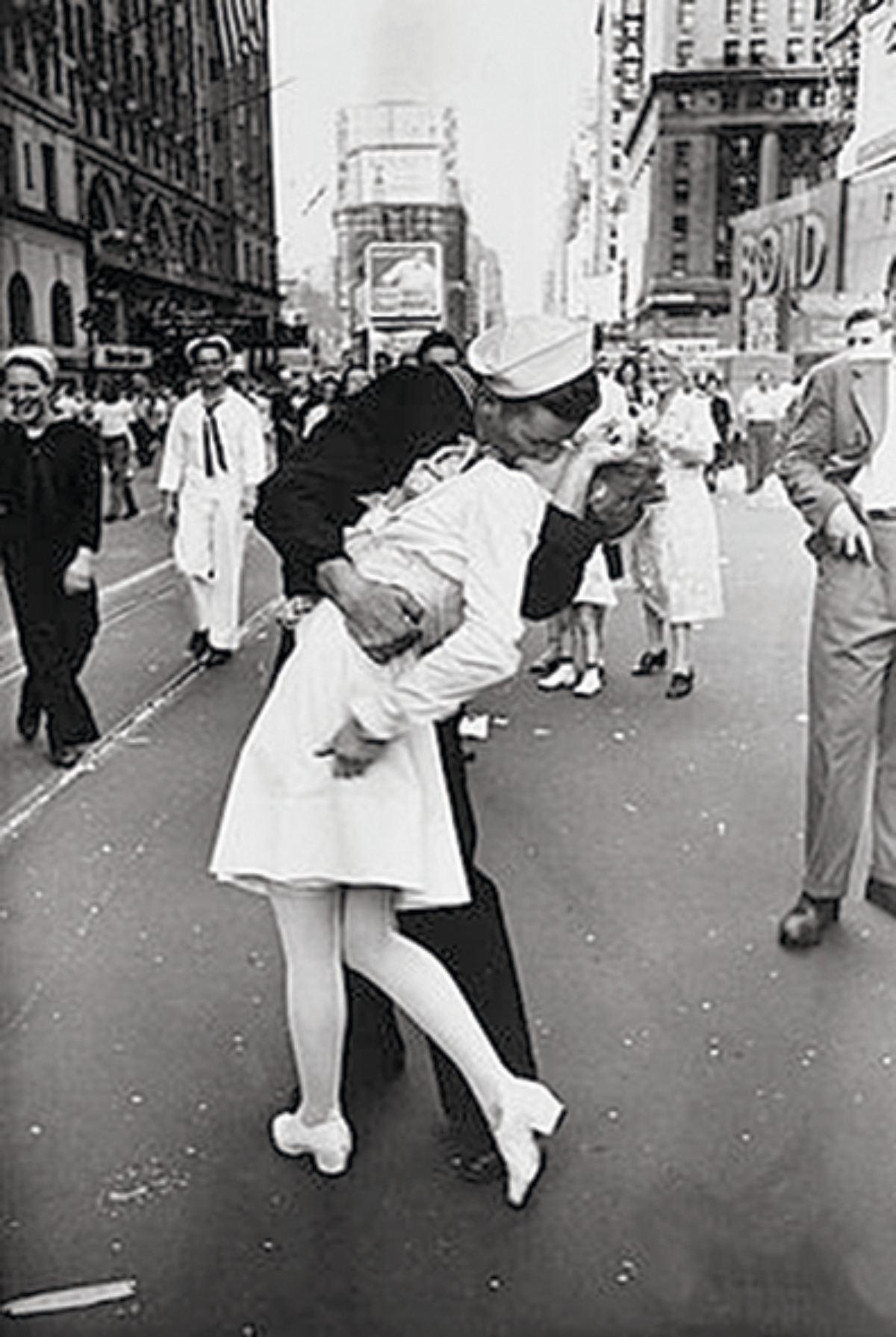It started with The Kiss! A look behind the lens of Alfred Eisenstaedt
As Alfred Eisenstaedt’s iconic picture makes headlines again, we take a closer look at the talent behind the lens
Just minutes after hearing the Second World War had ended, Alfred Eisenstaedt made his way towards Times Square with his trusty Leica and captured what would later become one of the most iconic photographs of the 20th century: an ecstatic sailor bending down to kiss a nurse.
The photograph, known as V-J Day in Times Square, or more familiarly, The Kiss, was back in the headlines this week following the death of George Mendonsa, the man identified as embracing an unsuspecting Jewish dental assistant named Greta Zimmer Friedman.
Before their famous embrace, the couple had never before met – but the moment was captured for posterity on August 14, 1945, by German-Jewish photographer Eisenstaedt, who was on assignment for Life magazine.
Get The Jewish News Daily Edition by email and never miss our top stories Free Sign Up
Eager to capture the celebrations around him, Eisenstaedt did not have a chance to get the names and details of his subjects, leading to several people putting themselves forward before experts identified Mendonsa and Friedman.
Writing about that infamous moment, Eisenstaedt recalled seeing a sailor “grabbing any and every girl in sight”.
He wrote: “Whether she was a grandmother, stout, thin, old, didn’t make a difference…Then suddenly, in a flash, I saw something white being grabbed. I turned around and clicked the moment the sailor kissed the nurse.”
Mendonsa, who served on a destroyer during the war and was on leave when peace was announced, also spoke about the kiss when he was honoured at the Rhode Island State House in 2015.
He said Friedman reminded him of nurses on a hospital ship that he saw care for wounded sailors.
“I saw what those nurses did that day and now back in Times Square the war ends, a few drinks, so I grabbed the nurse,” he said.
However Friedman, who had fled Austria aged 15 during the war, admitted in a 2005 interview that it was not her choice to be kissed.
“The guy just came over and kissed or grabbed,” she told the Library of Congress.
She added: “It was just somebody really celebrating. But it wasn’t a romantic event.”
The Kiss remains one of Eisenstaedt’s most memorable photographs, but was just one of more than 2,500 photo stories published in Life Magazine (which also used 90 of his images on the cover) during an extensive career spanning more than 50 years.
Born in 1898, Eisenstaedt was raised in Berlin and began taking an interest in photography aged 14, after he was given his first camera: an Eastman Kodak Folding Camera.
After serving in the German Army during the First World War, he became a photographer for Associated Press, as well as Illustrierte Zeitung, then the world’s largest publishing house.
His notable early photographs include an ice-skating waiter at the Grand Hotel in St Moritz, the first meeting between Adolf Hitler and Benito Mussolini in Italy, and Joseph Goebbels at the League of Nations in Geneva, 1933.
Of the latter, Eisenstaedt explained his subject had been smiling until he caught sight of the Jewish photographer, resulting in his tensed, scowling face.
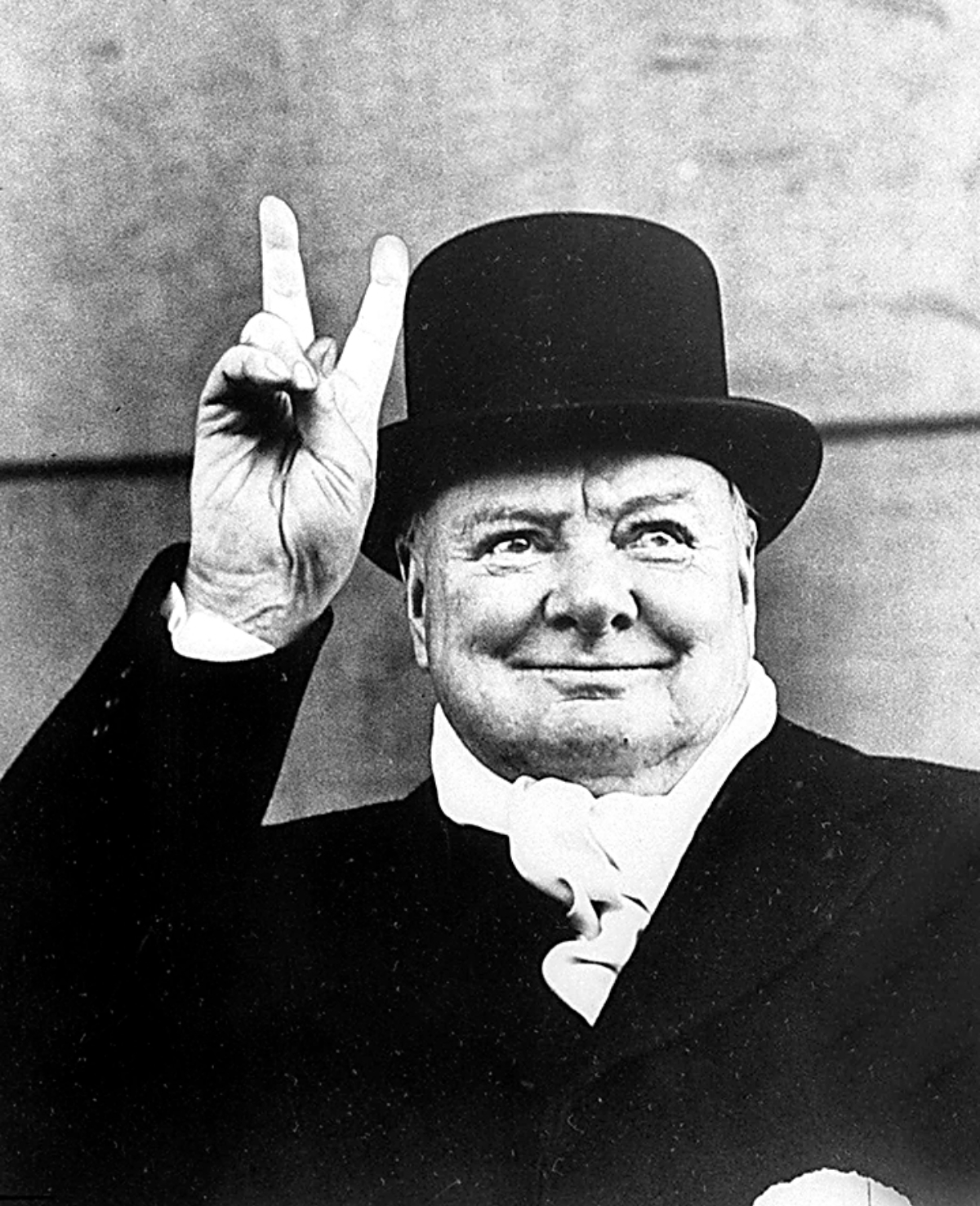
By 1935, facing the threat of Nazi persecution, Eisenstaedt moved with his family to New York, where he joined Life magazine, becoming one of its most well-known photojournalists.
His extensive career saw him rubbing shoulders with world leaders and celebrities, recording historic events and capturing human stories right up until his death in 1995.
His eclectic subjects included the Yakuza, a mafia-like organisation in Japan showing off their extensive body tattoos, the construction of Mount Rushmore National Memorial, Hollywood star Marilyn Monroe relaxing at home, and Winston Churchill flashing his famous “V for Victory” sign.
He also travelled to Hiroshima just four months after an atomic bomb was dropped by American forces on August 6, 1945, capturing a mother and child who would almost certainly have succumbed to radiation poisoning.
It was just one of many powerful and poignant moments of the 20th century captured by Eisenstaedt, whose work remains as evocative today as when they were first taken.
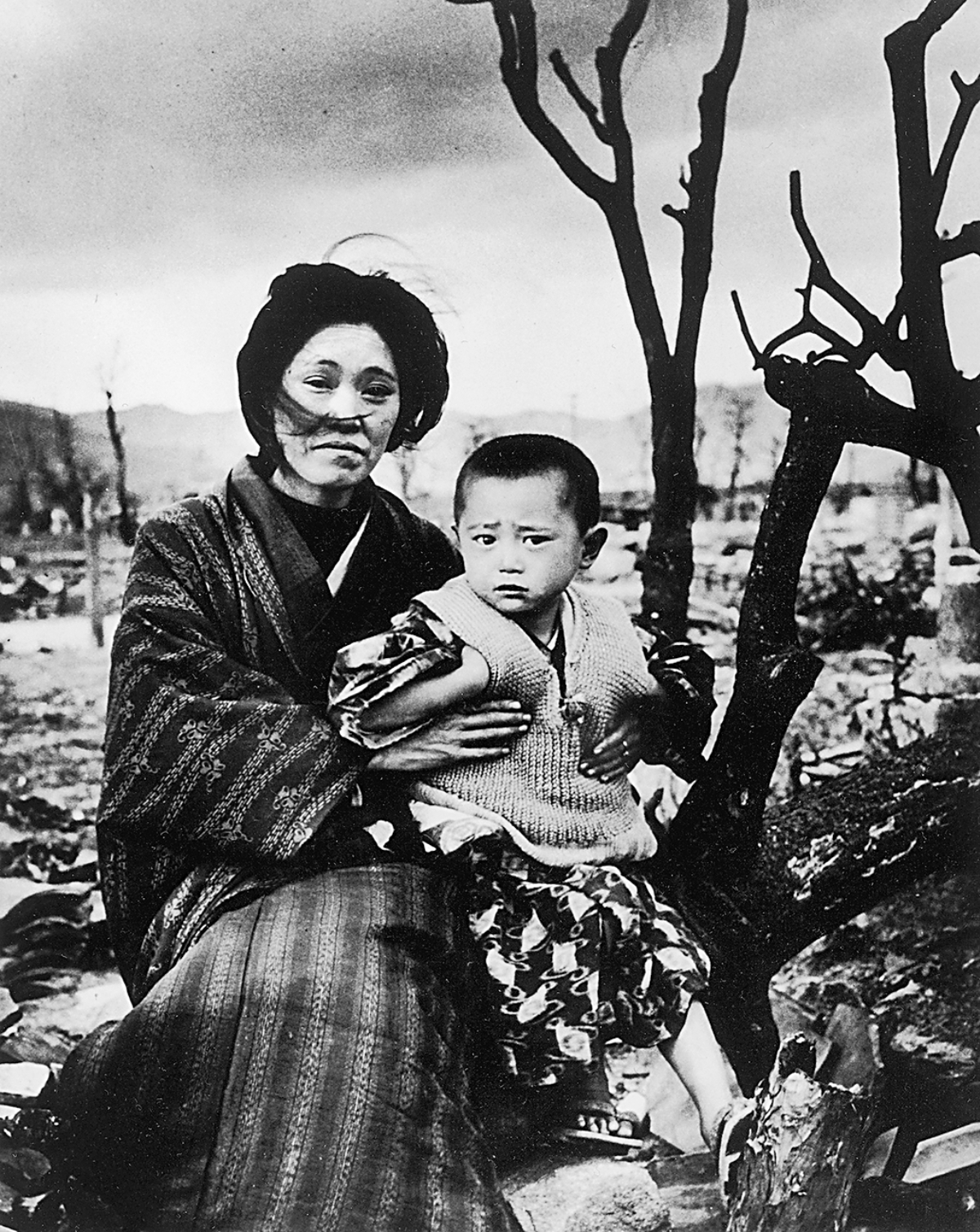

Thank you for helping to make Jewish News the leading source of news and opinion for the UK Jewish community. Today we're asking for your invaluable help to continue putting our community first in everything we do.
For as little as £5 a month you can help sustain the vital work we do in celebrating and standing up for Jewish life in Britain.
Jewish News holds our community together and keeps us connected. Like a synagogue, it’s where people turn to feel part of something bigger. It also proudly shows the rest of Britain the vibrancy and rich culture of modern Jewish life.
You can make a quick and easy one-off or monthly contribution of £5, £10, £20 or any other sum you’re comfortable with.
100% of your donation will help us continue celebrating our community, in all its dynamic diversity...
Engaging
Being a community platform means so much more than producing a newspaper and website. One of our proudest roles is media partnering with our invaluable charities to amplify the outstanding work they do to help us all.
Celebrating
There’s no shortage of oys in the world but Jewish News takes every opportunity to celebrate the joys too, through projects like Night of Heroes, 40 Under 40 and other compelling countdowns that make the community kvell with pride.
Pioneering
In the first collaboration between media outlets from different faiths, Jewish News worked with British Muslim TV and Church Times to produce a list of young activists leading the way on interfaith understanding.
Campaigning
Royal Mail issued a stamp honouring Holocaust hero Sir Nicholas Winton after a Jewish News campaign attracted more than 100,000 backers. Jewish Newsalso produces special editions of the paper highlighting pressing issues including mental health and Holocaust remembrance.
Easy access
In an age when news is readily accessible, Jewish News provides high-quality content free online and offline, removing any financial barriers to connecting people.
Voice of our community to wider society
The Jewish News team regularly appears on TV, radio and on the pages of the national press to comment on stories about the Jewish community. Easy access to the paper on the streets of London also means Jewish News provides an invaluable window into the community for the country at large.
We hope you agree all this is worth preserving.
-
By Laurent Vaughan - Senior Associate (Bishop & Sewell Solicitors)
-
By Laurent Vaughan - Senior Associate (Bishop & Sewell Solicitors)
-
By Laurent Vaughan - Senior Associate (Bishop & Sewell Solicitors)
-
By Laurent Vaughan - Senior Associate (Bishop & Sewell Solicitors)


